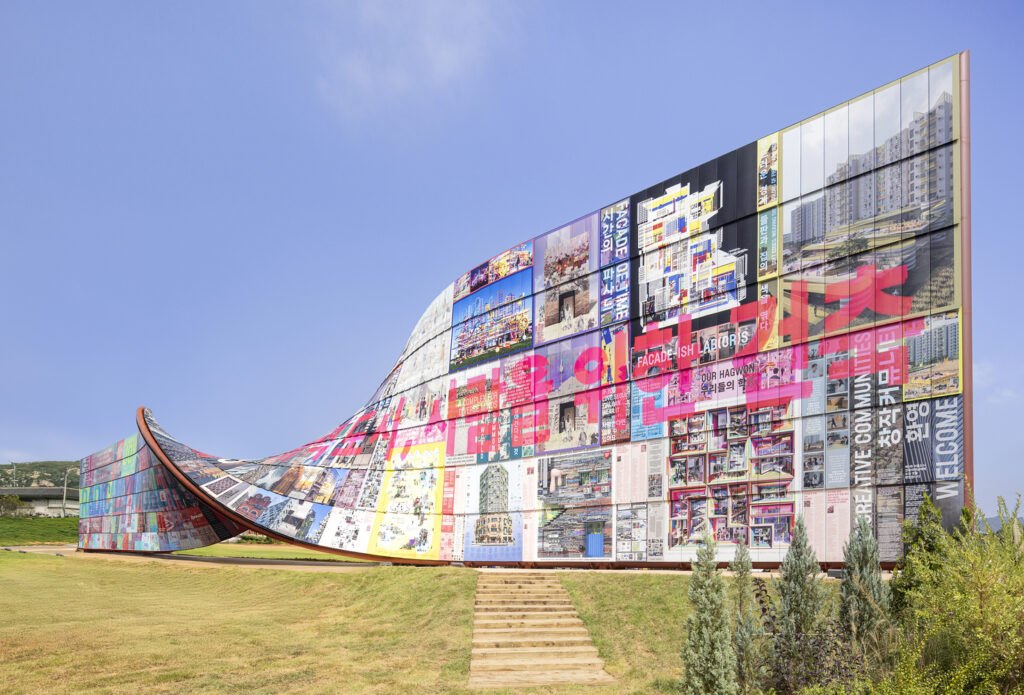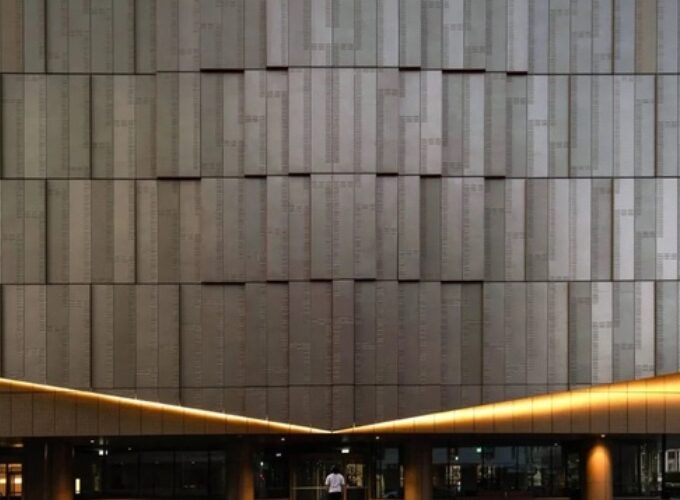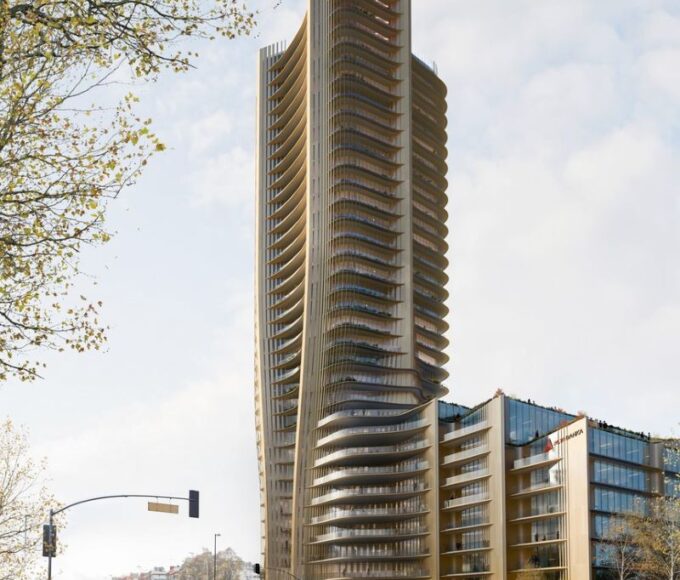On September 26, the 5th Seoul Architecture and Urban Design Biennale grandly kicked off at Songpa Green Square in the heart of Seoul. As one of Asia’s leading public architecture events, this year’s biennale is curated by renowned designer Thomas Heatherwick, with the core theme of “How to Make Cities ‘More Human-Centric’,” and will run until November 18. Throughout the event, a diverse range of exhibitions, global forums, and citizen-led projects will be held to delve into the pivotal role of architecture in building inclusive and sustainable urban environments.
The “Human-Centric Wall,” the highlight of the biennale, boasts striking visual and ideological impact. This installation art piece stretches 90 meters long and stands four stories high, composed of 1,428 steel tiles engraved with insights from citizens, scientists, and designers. It brings together 400 projects from 38 countries, meticulously designed by 110 architects, and takes the form of a winding gateway. Not only does it frame a manifesto advocating for a re-examination of the relationship between architecture and urban life, but it also serves as a key part of the open-air exhibition, encouraging visitors to engage deeply with the images and texts on the wall through close observation.

Surrounding the “Human-Centric Wall,” 24 “Public Life Walls” also draw considerable attention. Each wall, 2.4 meters wide and 4.8 meters tall, showcases large-scale architectural fragments designed by international teams, presenting diverse approaches to rethinking building facades. The creators come from diverse backgrounds, including chefs, craftsmen, architects, and engineers from South Korea, Burkina Faso, India, China, Japan, the United States, the United Kingdom, and other countries. This interdisciplinary and cross-cultural collision injects new vitality into the latest architecture design.
The biennale’s opening events are rich and high-profile. Seoul Mayor Oh Se-hoon presided over the opening ceremony, followed by a two-day “Emotional City” forum, which gathered over 400 activists, scholars, and architects to discuss urban development. The event also released three research reports under the “Humanize Campaign,” focusing on the connection between building facades, public health, and social well-being, providing theoretical references for urban construction.
In addition, the Seoul Hall of Urbanism and Architecture simultaneously launched a series of special exhibitions. Among them, a grassroots project involving over 500 Seoul citizens reflects on architecture’s impact on emotional experiences; “Emotionally Yours, Seoul” creates an interactive digital installation based on building facade images and related feelings submitted by the public; “The City’s Face” exhibits 25 projects centered on humanistic design from 21 cities; and “From a Bird’s Eye to the Human Eye” focuses on presenting 18 new architectural works that will shape Seoul’s future, viewed from an experiential perspective.
Notably, beyond curating this year’s biennale, Heatherwick Studio has also been making frequent moves in its Asian layout. In Seoul, the studio has become a design partner for the reconstruction project of Yeouido Daegyo Apartments—the first residential project of Heatherwick Studio in South Korea. It has also been selected to lead the redesign of the Coex Convention and Exhibition Center, helping to transform this important Seoul landmark. In Bangkok, the studio has launched the multi-functional development project Hatai, marking the official launch of its first project in Thailand and continuing to drive innovation in Asia’s architectural design sector.












